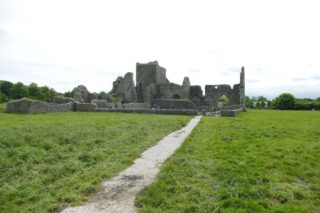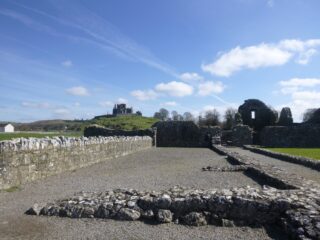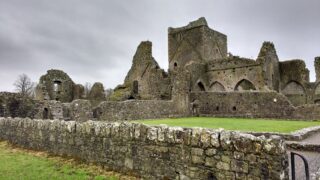Notice
Hore Abbey is a state-owned National Monument in the care of the Office of Public Works
*Please be aware there are sometimes livestock in the field surrounding this monument*
WARNING: It should be noted that these sites are unguided and a level of care and caution should be maintained during all stages of your visit. The Office Of Public Works (OPW) will not be held responsible for any damages, injuries, or losses that occur
Hore Cistercian Abbey
On the northern outskirts of Cashel town stands the ruins of the Cistercian Hore Abbey. This Cistercian Abbey was the last Irish foundation of this order before the Reformation. However before it was a Cistercian abbey it was a Benedictine monastery. It is believed that the Archbishop of Cashel, David McCarville replaced the Benedictines with the Cistercians and is believed to be buried at the abbey.
After the dissolution of the monasteries in 1540, the chancel was used as a parish church. The lands of the abbey passed through various hands including the 9th Earl of Ormonde, James Butler, before Queen Elizabeth I granted the lands to the 4th Earl of Sussex, Sir Henry Radcliffe, in 1561. Radcliffe was relieved of his Irish possessions when he was charged with corruption. After Radcliffe refused to pay compensation due, he was jailed in 1565, and left Ireland permanently for England.
Hore Abbey is a cruciform Gothic church, tower and northern facing cloister, looking out towards the Rock of Cashel. Much of the abbey still stands, including the nave, aisles and transepts, sacristy, range and chapter house and chancel. A large altar stone remains, a double piscine, and a sedilia, which are lit by ogee-headed windows. Two triangular head tombs and part of a two-phase cloister arcade survives.
Visit Historic Environment Viewer for more information on Hore Abbey
Protect our Past - Click here to read about the importance of protecting our country’s unique heritage sites
This national monument is protected in accordance with the National Monuments Acts 1930 to 2014





